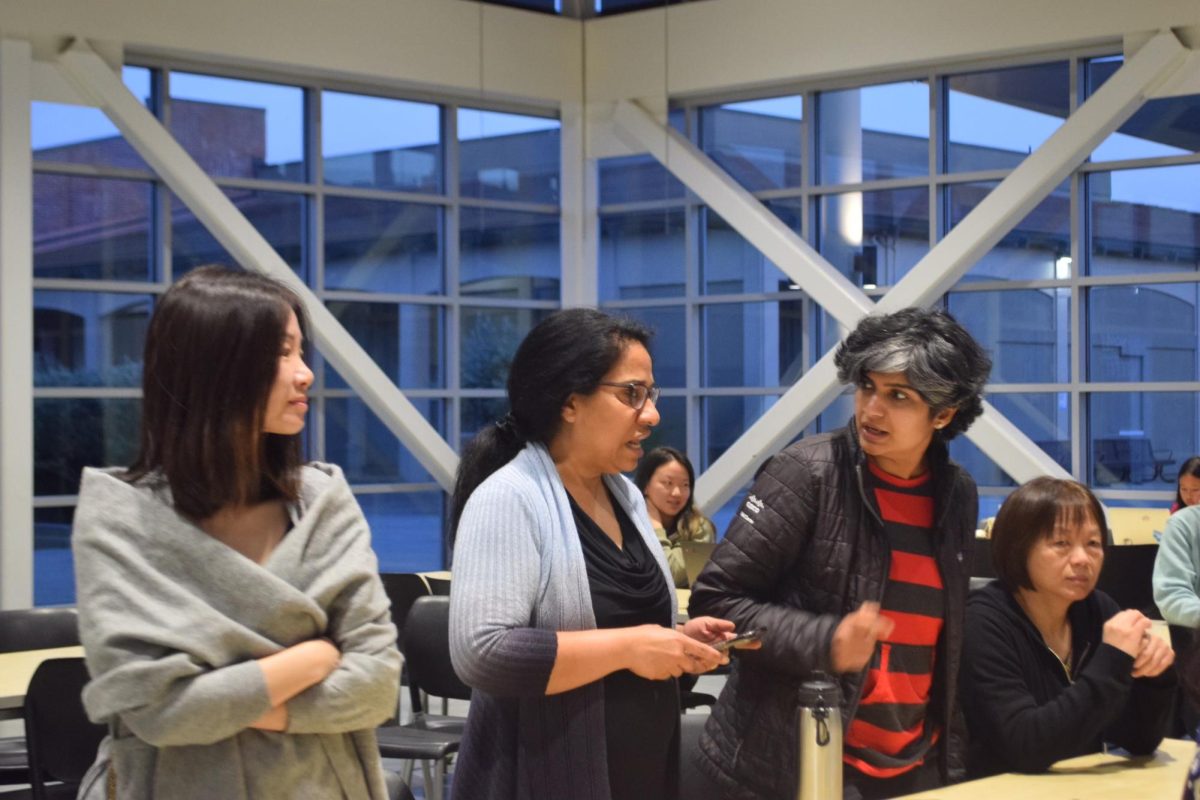n Oct. 31, a day when most of the school was celebrating Halloween, Spanish teachers and students were dressed up for a different reason: Day of the Dead or Dia de los Muertos.
Day of the Dead is a popular holiday, particularly in Mexico, when people honor the lives of their ancestors or friends who have passed away. Instead of a day of mourning, Day of the Dead is a celebration of life where people decorate altars to commemorate their loved ones and wear skull masks and jewelry.
“[The Day of the Dead] is when people come together [in the cemetery] to commemorate people who have passed,” said Spanish teacher Norma Abarca. “They celebrate their existence and spend time with them.”
Freshman Jeffrey Flewelling in Fortune’s Spanish 1 class brought a skeleton to class that reflected his personality as he said in Spanish, “My skeleton runs long distances because I like to run long distances.”
Despite its proximity to Halloween, Day of the Dead is a very different holiday. It falls on Nov. 1 and 2, but since a majority of the students and faculty dressed up for Halloween, most teachers in the Spanish department chose to celebrate it on Oct. 31 instead.
Students in Spanish teacher Maria Autrán’s Spanish 3 class built dioramas predicting their deaths and her AP Spanish class decorated altars that cover the back two tables of the classroom. In Spanish teacher Ashley Stolhand’s class and Spanish teacher Molly Guadiamos’ class, students made decorations like papel picado, composed of an artistically cut piece of colorful tissue paper, to represent life’s fragility Spanish teacher Richelle Griffin’s class turned in projects, and Spanish teacher Joyce Fortune’s class gave presentations on skeletons that they had previously made and enjoyed Pan de Muertos and Horchata, two dishes that are often eaten on the holiday. Abarca’s class had a potluck, watched an explanatory video and made skull decorations.
Abarca feels like culture is an important part of learning a new language, and since Day of the Dead is such a major holiday in many Spanish speaking countries, the Spanish Department focuses heavily on creating an atmosphere similar to that of other countries who celebrate through food and music relevant to the culture.
“At Monta Vista, we do a lot of grammar related activities,” Abarca said. “So one to two days out of the year to celebrate culture isn’t enough. But I feel like if we’re going to celebrate any of it, it should be something that’s important, and I feel like Day of the Dead is important.”
Many of Abarca’s students enjoyed the idea of having a more relaxed day of learning on Halloween and understood the importance of the holiday and how it applied to their own lives. While Halloween tends to be a holiday that is connected to idle pranks and fun, Day of the Dead, they claim, is a lot more meaningful.
“[The Day of the Dead] is a day to honor your ancestors and Spanish culture,” sophomore Sujay Bhatt said. “It has more of a meaning, while Halloween is more for fun.”










